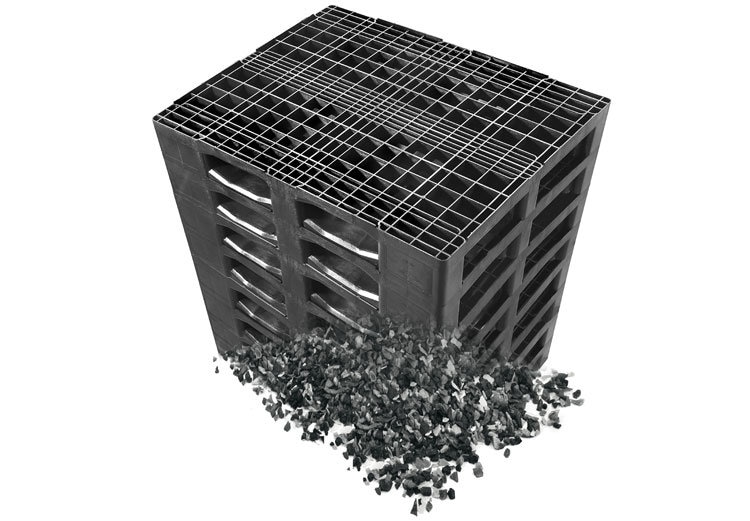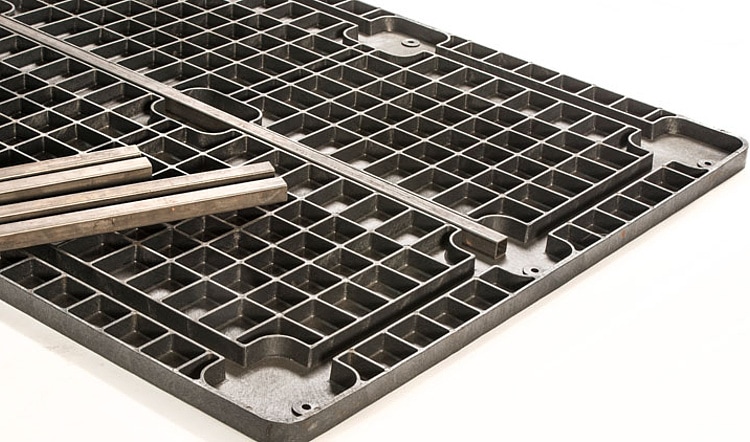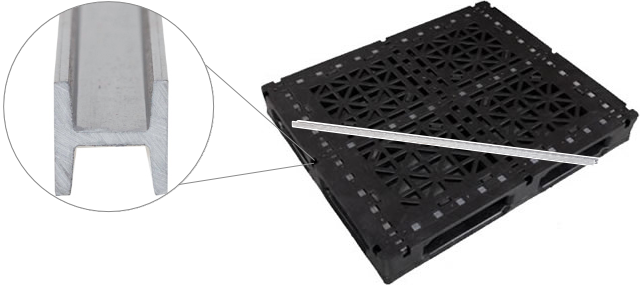|
In my last post we talked about how the STRUCTURE of a plastic pallet can impact the way it interfaces with pallet racking. In this discussion, we will address MATERIAL as it relates to the rackability of a plastic pallet. For our purposes here, we will assume our pallets need to bridge an open span in a rack. If you haven't been following along in this series, check out my 7 Ways to Use Rackable Pallets post to get up-to-speed. Stiffness Matters Again, assuming our pallet has the proper structure to target on the rack safely, what is the main pallet characteristic for allowing it to bridge the span without deflecting? STIFFNESS! And yes, this actually is a technical term that can be measured. Plastic resin producers have ways of testing various plastic materials and coming up with numbers to reflect properties best suited to an application. These plastic materials can vary in:
Loads can Complicate Things The bottom line for us is using a material that is stiff enough to bridge our span carrying a load. Load? Did someone mention a load? For our purposes here, we will assume our loads are evenly distributed across the surface of our pallets. The nature of a load can certainly impact the performance of a pallet, but the subject is complex enough that we will leave load configuration for another day. Stiffness can be Achieved in Several Ways
In conclusion, it is safe to say that most commodities plastics used to mold plastic pallets today allow a certain degree of rackability with only a well-designed structure and the native stiffness of the plastic. A common target "racking load rating" for a 48x40 full frame plastic pallet is 2200 pounds. Although not universal, this is a common target. Most certainly if higher racking ratings are required, the introduction of either fillers to create a stiffer composite or some form of reinforcement rods would be needed. If you still have questions about how material or structure apply to the selection of a rackable plastic pallet, you can post them here. And, be sure to watch for my next post on the unit load itself and how load configuration can impact how a pallet will behave in a rack. Post by: Hartson Poland, Business Development - Plastic
0 Comments
Leave a Reply. |
Call Us: (410) 477-3000
Headquartered in Baltimore since 1918 Nelson Company is a trusted source for pallets & packaging materials.
NelsonCompany.com Is your packaging system costing more than it should? Find out how you can start saving with an analysis from Nelson Technical Center.
Our own web-based software for reverse distribution. Nelson-ART™ manages the entire life-cycle of your packaging assets.
|
Tech CenterThe Nelson Technical Center finds savings. Solutions for the design, supply and recovery of transport packaging.
(443) 649-1049 |
Wood SalesCustom wooden pallets and crates are our specialty. Ask us about wood manufacturing, repair and recycling.
(410) 477-3000 |
|







 RSS Feed
RSS Feed
